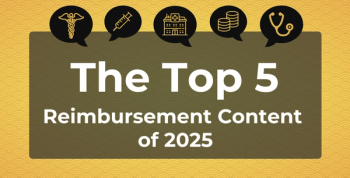
COPD Is a More Likely Comorbid Condition in HIV-Positive Individuals
Chronic obstructive pulmonary disease (COPD) occurs at a higher rate in individuals who have HIV compared with those who do not, and it has a global incidence of more than 380 million people. The progressive lung disease is also diagnosed at a younger age in HIV-positive persons compared with their HIV-negative counterparts, and higher rates of smoking may be to blame.
Chronic obstructive pulmonary disease (COPD) occurs at a higher rate in individuals who have
The investigators from Toronto, Ontario, cited a lack of population-based data on the rates of COPD among HIV-positive persons—despite high rates of smoking among this patient population, which predisposes them to the degenerative lung disease—as the driver behind their study. They conducted a retrospective, population-based study, noting, “We hypothesized that, because of HIV-related immune and inflammatory factors and a high prevalence of smoking, people with HIV would have a higher incidence of COPD than the general population.”
Using health administrative databases from Ontario for January 1, 1996, through December 31, 2015, the team gathered information on 1849 HIV-positive and 1,168,7272 HIV-negative persons who had COPD that was newly diagnosed during the study period. According to the authors, “because COPD incidence did not increase linearly over time,” they used periods of 1996 to 2000, 2001 to 2005, 2006 to 2010, and 2011-2015.
The mean (SD) ages of the HIV and non-HIV population were 49.7 (10.4) and 62.2 (14.8) years, respectively, and the group with HIV had a higher proportion of men (49.2% vs 18.6%). COPD rates were higher in the HIV population per 1000 person years, at 10.4 versus 9.0 cases (standardized incidence ratio [SIR], 1.16; adjusted rate ratio [ARR], 1.34; 95% CI, 1.10-1.21), and among HIV-positive men (ARR, 1.32; 95% CI, 1.24-1.40) and women (ARR, 1.54; 95% CI, 1.37-1.72) compared with those who did not have HIV.
Also during the study period, although the average annual COPD rate did not vary much (—1.5%; 95% CI, –5.8% to 2.9%) in the HIV-positive cohort, it did decline (–2.0%; 95% CI, –2.6% to –1.3%) in the HIV-negative cohort. In all 5-year periods, using multivariable regression, the HIV-positive group also had higher rates of COPD.
A
The Ontario investigators strongly recommend the following moving forward:
- Screening spirometry to assess lung function in the at-risk HIV positive population, in addition to studies with larger patient populations to evaluate the effectiveness of the procedure, because “several studies suggest that hospital admissions and emergency department use related to COPD are more common in this population relative to HIV-negative people with COPD.”
- Smoking cessation assistance, because “smoking now accounts for more years of lost life among people with HIV who smoke than HIV infection.”
- Additional studies on how COPD progresses in and affects persons with HIV.
Reference
Antoniou T, Yao Z, Raboud J, Gershon AS. Incidence of chronic obstructive pulmonary disease in people with HIV in Ontario, 1996-2015: a retrospective population-based cohort study. CMAJ Open. 2020;8(1):E83-E89. doi: 10.9778/cmajo.20190028.
Newsletter
Stay ahead of policy, cost, and value—subscribe to AJMC for expert insights at the intersection of clinical care and health economics.








